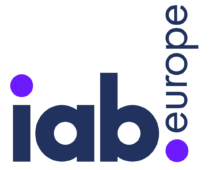Education of Advantages of In-app Needed: Q&A with Cristina Constandache, Cheetah Mobile
by Lindsay Rowntree on 20th Jul 2016 in News

There is no denying that the growth in mobile consumption and investment is significant. However, there are also challenges with the level of investment versus consumption. Cristina Constandache (pictured below), MD EMEA, Cheetah Mobile explains to ExchangeWire why investment lags behind usage and how the industry can overcome the stigma of in-app investment.
ExchangeWire: When talking about mobile advertising, we are of course referring to mobile web and in-app. With the growth of in-app usage, how has the landscape of in-app advertising developed?
Cristina Constandache: In-app ad spend is expected to reach over £20.3bn in 2016, which testifies to its potential. Marketers know that of the time users spend on media, the majority of time spent is in apps: just 11% happens via mobile web and a tremendous 89% via apps. Apps enable users to shop, read the news, play games, compose music or book a flight in one place without needing to browse endless websites.
There have already been significant developments with in-app ad formats beyond the traditional banner, such as native and video. The most crucial development is that ads are less invasive and blend in with the overall in-app experience.
Is in-app advertising a better solution for marketers than the mobile web? How does it help them improve audience engagement?

Cristina Constandache, MD EMEA, Cheetah Mobile
Brands and agencies should educate themselves about the advantages of in-app compared to the mobile web, because they have a much higher chance of engaging users where they spend the vast majority of their time. In-app advertising is also hyper-targeted compared to mobile web, as it can be enhanced by tiny data. This makes for more efficient strategies with campaigns paying off both in sales and consumer engagement. When a user searches for products online, for example, they are harder to pin down and track all the way through to a purchase on the mobile web. Apps provide a closed environment which allows consumers to click through and make a purchase in a much more linear way, making users more trackable. In-app also allows for more specific metrics such as LTV (Lifetime Value, for long-term sustainable ROI).
On top of that, marketers have access to a series of critical metrics, such as user attribution, which shows where consumer traffic is coming from, as well as where it is heading. Certain ad technologies enable advertisers to obtain insights such as in-app attribution and post-back attribution. Understanding these metrics is crucial in making ad placement and spend decisions, but also to ensure the constant optimisation of campaigns.
Some marketers fear in-app advertising and either avoid mobile entirely or only focus on a mobile web strategy. What is this fear drawn from?
The fear stems from the unknown. It might seem obvious, but a number of marketers have shied away from taking the step towards mobile, and especially in-app advertising, because of the lack of information available, as it’s still a relatively new channel compared to desktop. This mindset is still very present despite the fact that IDC research revealed at the end of 2015 that in-app ads are responsible for well over half of the whole app revenue in most countries.
Marketers are on their phones as much as consumers, but it’s taken them a while to realise that, nowadays, a brand’s success is highly dependent on their mobile advertising strategies and this needs to focus on in-app. With a recent rise in sophisticated in-app campaign signals, in-app advertising has reached a turning point. These signals provide marketers with valuable insights into the user’s lives, needs and wishes; real data allows for more sophisticated targeting, so marketers should be embracing them.
It's commonly acknowledged that mobile spend lags behind mobile consumption – how will in-app developments help to remove the potential stigma of in-app advertising for both marketers and publishers?
In 2016, mobile accounts for 27% of total UK ad spend, but by 2020 mobile ad spend will be three-times higher than desktop. There is so much potential to be capitalised upon by the marketers who embrace mobile; and, more specifically, in-app advertising. Brands and advertisers must capitalise on the opportunity to reach their audience in their favourite places: in-app.
A common issue that contributes to this ‘stigma’ is the seeming lack of information around in-app advertising, but savvy marketers and businesses are making substantial investments in mobile and in-app ad spend. As these investments continue proving the effectiveness and ROI of in-app investments, we can be sure the stigma will disappear.
Some in the industry say that app usage is in decline, as websites become more mobile friendly. Is there any weight to this view and does this affect in-app advertising?
Statistics show that app usage is growing at a steep pace: by 2017, download figures for free mobile apps are projected to reach 253.91 billion. It’s no secret that the best advertising is native, and any brand’s likelihood to engage with their audience depends on how well, and how fast, it evolves in that direction. This is where in-app advertising becomes more relevant than ever, as the advertising content has the ability to be more native by nature than on desktop and even on the mobile web. Native in-app advertising fits naturally in the context where it is placed, and is less intrusive than most ad formats as a result. From the streams of tiny data available, in-app engages users in the timeliest and most useful ways.
There have already been significant developments with in-app advertising, including playables and rewarded ads – what's next?
In-app advertising offers far more than playables and rewarded ads, with video being the latest trend on the horizon; 40% of UK consumers stream video in-app, both short- and long-form. There are also very few issues with repurposing video content for use in-app – another little help for advertisers.
With the insights that ‘tiny data’ give to marketers, they can tailor their messages and launch useful and pre-emptive ads, rather than irrelevant, disruptive ones. When ads are relevant and informative, as well as native, users are less likely to download ad-blockers. Cheetah Ad Platform’s recent study shows that native ads engage users 8–10 times more than any other form of advertising.
Users spend most of their mobile time in-app, and with the myriad formats available, and the inherent native nature of in-app advertising, they are becoming an even more exciting playground within which advertisers can innovate and engage.








Follow ExchangeWire